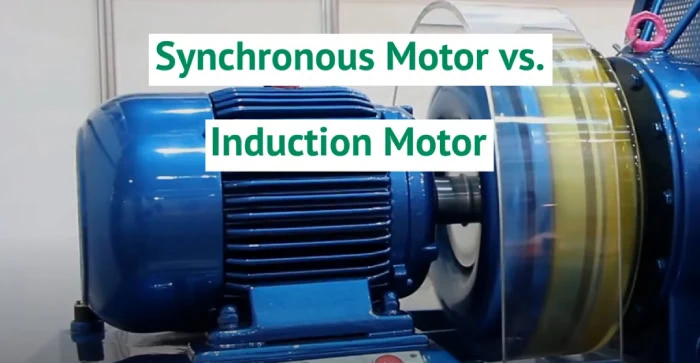Electric motors are pieces of equipment used for converting electricity into mechanical energy. They use electromagnetism to operate, which facilitates the interaction between an electric current and the magnetic field of the motor. This interaction generates torque in a wire winding that causes the motor shaft to spin. Electric motors are often used in applications such as power tools, appliances, fans, and hybrid or electric vehicles, among many others.
In this blog post, we’ll review how alternating current (AC) electric motors work and the various differences between synchronous and induction motors.
How Does an AC Electric Motor Work?
An AC motor specifically converts alternating current into mechanical energy through the use of an electromagnetic induction process. These motors use a stator and rotor to operate with alternating current, with the stator remaining stationary and the rotor rotating.
Single or three-phase AC motors may be used, depending on the application. Three-phase AC motors are ideal for applications requiring bulk power conversion, while applications that need small power conversion tend to use single-phase AC motors. Single-phase AC motors see broad use in residential and commercial appliances, for example.
There are two main categories of AC motors: synchronous and induction. These types differ in the speed of the rotor compared to the speed of the stator.
Synchronous Motor vs. Induction Motor
The fundamental difference between these two motors is that the speed of the rotor relative to the speed of the stator is equal for synchronous motors, while the rotor speed in induction motors is less than its synchronous speed. This is why induction motors are also known as asynchronous motors.
The asynchronous nature of induction motors creates slip—the difference between the rotating speed of the shaft and the speed of the motor’s magnetic field—which allows for increased torque. These motors are powered at the stator, while the rotor induces current—hence the name “induction” motor. Synchronous motors experience no slip because the stator and rotor are in sync and require an external AC power source.
Synchronous motors include two electrical inputs, making them doubly excited machines. In three-phase synchronous motors, typically three-phase AC or another input will supply the stator winding required to facilitate torque generation. The rotor supply used is often DC, which either starts or excites the rotor. When the stator and rotor fields lock together, the motor is now synchronous. These motors are used in applications such as power stations, manufacturing facilities, and voltage control in transmission lines.
Unlike synchronous motors, induction motors can start when they supply power to the stator, eliminating the need for a power source to excite or start the rotor. These motors also feature a squirrel-cage or wound design, which has led to the development of motor types such as capacitor start induction run motors, squirrel cage induction motors, and double squirrel cage motors. Induction motors see use in centrifugal fans and compressors, conveyors, lathe machines, and lifts.
Let TLC Help You Find an Electrical Motor for Your Application
Electrical motors are used in a wide range of applications, from powering businesses to smaller individual applications like consumer appliances. Electrical motor OEMs and suppliers need partners they can trust to produce reliable parts.
Thomson Lamination offers high-quality, stamped electric motor lamination components. We can produce high-volume rotor and stator lamination runs using high-conductivity metals for synchronous or induction motors. For more details about our capabilities, please contact us today.
Posted in Uncategorized

